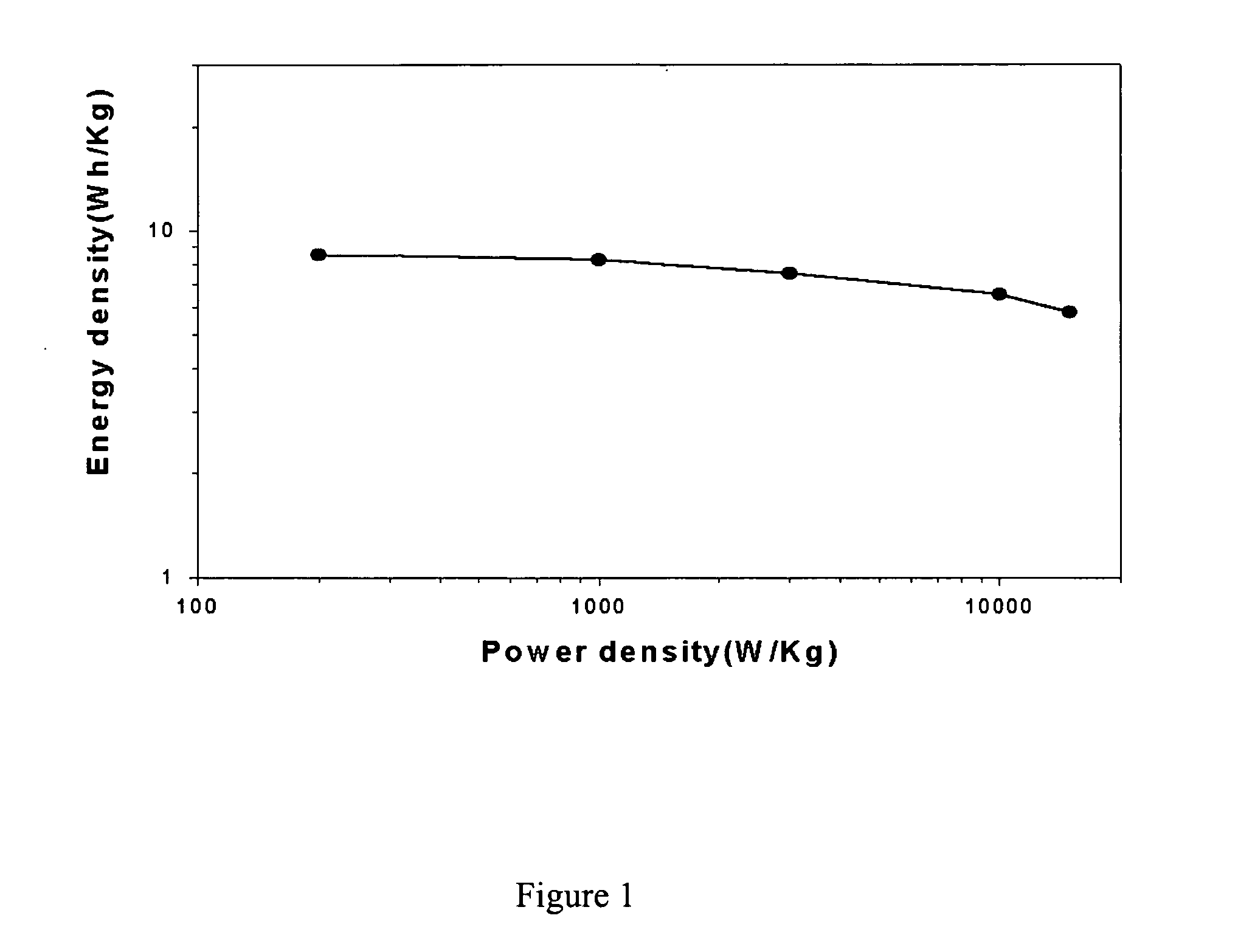Carbon nanotube or carbon nanofiber electrode comprising sulfur or metal nanoparticles as a binder and process for preparing the same
a carbon nanotube or carbon nanofiber electrode technology, applied in the field of carbon nanotube or carbon nanofiber electrode comprising sulfur or metal nanoparticles, can solve the problems of high energy density, low power density, and reduced lifetime and performance of the electrod
- Summary
- Abstract
- Description
- Claims
- Application Information
AI Technical Summary
Problems solved by technology
Method used
Image
Examples
example 2
[0097] The powder of the Cu nanoparticle-deposited carbon nanotubes prepared as in Example 1 was dispersed on a Ni foil as a current collector and then was maintained at 1100.degree. C. while pressed in a nitrogen atmosphere, thus yielding an electrode. The exerted pressure was 10 atm and the pressing time was 5 min.
example 3
[0098] This example represents the preparation of a carbon nanotube electrode using Cu nanoparticles as a binder, wherein the Cu nanoparticles are prepared by the reverse-phase emulsion method.
[0099] The SWCNTs (KH Chemicals Co., Ltd.) as used in Example 1 were mixed with Cu nanoparticles with stirring (CNT: Cu=8:2 by weight) in a nitrogen atmosphere, wherein the Cu nanoparticles were alternatively prepared and have an average diameter of 30 nm. Then, the mixture was made into a disc shape by pressing under a pressure of 10 atm.
[0100] The Cu nanoparticle-deposited carbon nanotubes disc prepared above was placed on a Ni foil as a current collector having a thickness of 75 .mu.m and then maintained at 1000.degree. C. for 10 min while pressed under a pressure of 20 atm in a nitrogen atmosphere, thus yielding an electrode.
example 4
[0101] This example represents the preparation of a carbon nanotube electrode using Co nanoparticles as a binder that is prepared by depositing a cobalt compound on the carbon nanotubes and then reducing these nanoparticles.
[0102] A cobalt compound, Co(NO.sub.3).sub.2 was deposited on the same SWCNTs (KH Chemicals Co., Ltd.) as used in Example 1 in a weight ratio of 8:2 (CNT: Co) by an impregnation method. The cobalt compound nanoparticle-deposited carbon nanotubes were dried at 110.degree. C. for 1 day and then reduced in a hydrogen atmosphere at 400.degree. C. for 2 h. The as-prepared, Co nanoparticle deposited-carbon nanotubes were made into a disc shape by pressing under a pressure of 10 atm
[0103] The Co nanoparticle deposited-carbon nanotube disc was placed on a Ni foil as a current collector having a thickness of 75 .mu.m and then maintained at 1200.degree. C. for 10 min while pressed under a pressure of 10 atm in a nitrogen atmosphere, thus yielding an electrode.
PUM
| Property | Measurement | Unit |
|---|---|---|
| particle size | aaaaa | aaaaa |
| pressure | aaaaa | aaaaa |
| diameter | aaaaa | aaaaa |
Abstract
Description
Claims
Application Information
 Login to View More
Login to View More - R&D
- Intellectual Property
- Life Sciences
- Materials
- Tech Scout
- Unparalleled Data Quality
- Higher Quality Content
- 60% Fewer Hallucinations
Browse by: Latest US Patents, China's latest patents, Technical Efficacy Thesaurus, Application Domain, Technology Topic, Popular Technical Reports.
© 2025 PatSnap. All rights reserved.Legal|Privacy policy|Modern Slavery Act Transparency Statement|Sitemap|About US| Contact US: help@patsnap.com

